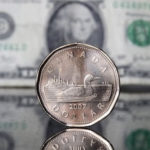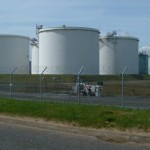West Texas Intermediate and Brent crude fell on Monday after Saudi Arabia ramped up production in February, helping OPEC exceed its collective target for a ninth straight month, while the US dollar traded near an 11-year high versus a basket of major peers. A further drop in active US oil rigs provided support.
US crude for delivery in April traded 0.90% lower at $49.31 per barrel at 10:02 GMT, shifting in a daily range of $49.62-$49.02. The contract rose 3.3% on Friday to $49.76, capping a 3.2% monthly gain, the first since June 2014.
Meanwhile on the ICE, Brent for settlement in the same month slid 0.59% to $62.21 a barrel, having ranged between $62.50 and $61.78 during the day. The European crude benchmark rose 4.2% on Friday to $62.58, registering an 18% surge in February, the biggest such gain since May 2009. Brent traded at a premium of $12.9 to its US counterpart, up from Fridays close of $12.82, which was the widest since January 2014.
The Organization of the Petroleum Exporting Countries pumped 30.6 million barrels per day of crude oil in February, a Bloomberg survey showed, exceeding the groups collective target of 30 million bpd for a ninth straight month. Saudi Arabias production jumped by 130 000 barrels per day to 9.85 million bpd last month, the highest since September 2013, while a National Oil Corp. official said that Libyas output has recovered to more than 400 000 barrels per day.
Adel Abdul Mahdi, Iraq’s oil minister, said yesterday he expected to see oil trade at $64-$65 a barrel in the near-term, adding that Iraq, the oil cartels second-biggest producer, plans to export more than 3 million bpd of crude in March from over 2.5 million bpd in February.
A stronger dollar further weighed on oil after data by the Bureau of Economic Analysis showed a larger-than-expected US economic expansion in the fourth quarter, while the Michigan Consumer Sentiment index reflected a pick-up in consumer confidence. A gauge measuring the performance of the US dollar against a basket of six major trading partners hovered near the highest in 11 years.
However, many analysts shared the view that the market has bottomed and prices will begin to recover, albeit gradually and not in a V-shaped manner.
A base for such expectations was the 12th consecutive weekly drop in the total number of US oil rigs in service to the lowest since June 2011. Baker Hughes Inc. reported on Friday that US drillers idled 33 rigs last week, bringing their count to 986.
Although the idling of 589 rigs since early-December has failed to scale back US production and drain nationwide stockpiles, it would cut output growth to 385 000 bpd by the fourth quarter, according to Goldman Sachs, drawing closer to levels of market balance.
Data by the Energy Information Administration showed last Wednesday that US crude oil stockpiles surged by 8.427 million barrels in the seven days through February 20th to 434.1 million, the highest in at least 80 years, while domestic crude production jumped by 5 000 barrels per day to 9.285 million bpd, the highest since 1972.
China
In China, government data showed on Sunday that activity in the Asian nations manufacturing sector contracted for a second straight month in February, with the corresponding manufacturing PMI coming in at 49.9 from 49.8 in January. The services sector marked an improvement, according to the official report, as the China non-manufacturing PMI rose to 53.9 from 53.7 in January.
A separate private report showed that Chinese manufacturers saw a renewed improvement in overall operating conditions last month, the first in four, with both output and total new orders expanding at faster rates. The final HSBC China Manufacturing PMI rose to 50.7, exceeding a February 25th preliminary estimate of 50.1 and rebounding from 49.7 in January.
However, new export orders slid for the first time in ten months, reflecting weakened external demand, while deflationary pressures persisted and manufacturers continued to cut workforce, although fractionally.
The Peoples Bank of China cut on Saturday interest rates for the second time in three months after it recently lowered minimum reserve requirements for banks to boost economic activity in the worlds second-biggest oil consumer. The central bank cut its deposit rate to 2.5% from 2.75%, while lowering its interest rate to 5.35% from 5.6%.
Market players now eyed personal income and spending numbers from the US, due later today, as well as the Markit and ISM manufacturing figures to gauge the US economys pace of recovery.
Pivot points
According to Binary Tribune’s daily analysis, West Texas Intermediate April futures’ central pivot point is at $49.39. In case the contract breaches the first resistance level at $50.31, it may rise to $50.87. Should the second key resistance be broken, the US benchmark may attempt to advance $51.79.
If the contract manages to breach the first key support at $48.83, it might come to test $47.91. With this second support broken, movement to the downside could continue to $47.35.
Meanwhile, April Brent’s central pivot point is projected at $61.97. The contract will see its first resistance level at $63.44. If breached, it may rise and test $64.29. In case the second key resistance is broken, the European crude benchmark may attempt to advance $65.76.
If Brent manages to penetrate the S1 level at $61.12, it could continue down to test $59.65. With the second support broken, downside movement may extend to $58.80 per barrel.





